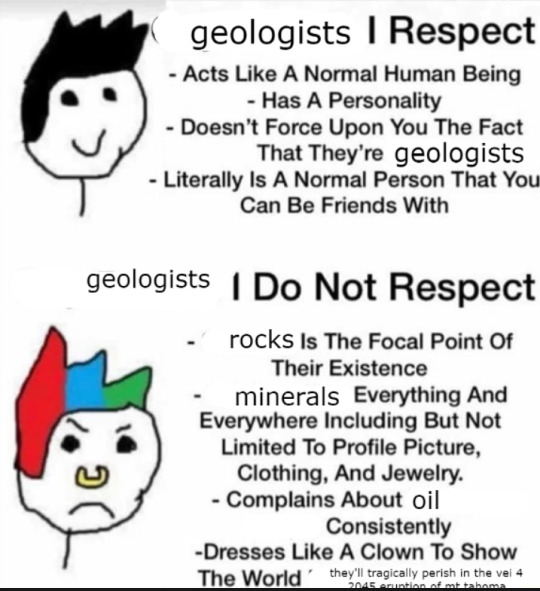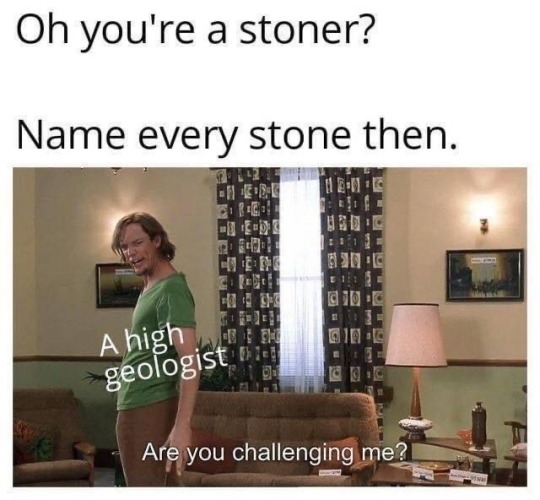#cataclasite
Explore tagged Tumblr posts
Text

Cataclasite; part of the various deformation derived material in the Esk Head Melange, the tectonic boundary between two subduction stacked submarine fan complexes that form the Greywackes of eastern Aotearoa/New Zealand. Siltstone augen torn apart in a matrix of grey argillite mudstones, with one big pale clast of what looks like a feldspar, possibly from a pebble (but in the melange, could be anything from anywhere.)
65 notes
·
View notes
Text

Cataclasite - Varm luft over en døende krop (EP)
Instrumental/Funeral Doom Metal from Udine, Italy
"We take warmth for granted. Cold is just a lack of motion, the lack of a expectation in a future that won't be there for us, the lack of memories of our recent past. We all die and leave everyone we know, everyone we love, a grey day behind us, that cold that we won't even feel anymore. Warmth won't be there for them. It won't be there for us. Even if we want to believe in a burning hell, even if we leave behind a lasting legacy, a feeling in someone we once knew, we're gonna be cold, "be", not "feel". Feeling is warmth. Cold is nothing. We'll be cold. We'll be nothing"
1. Varm luft over en døende krop 27:50
Release date: November 13th, 2024 via #NewUdineHardcore
#cataclasite#doom#doommetal#funeral#funeraldoom#funeraldoommetal#instrumentaldoom#atmosphericdoommetal#dronemetal#funeraldronedoom#postmetal#postdrone#ambientmetal#alternative#doomdeathmetal#melodicdoommetal#doommetalband#doommetalvinyl#doommetalalbum#doommetalart#blackdoom#blackdoommetal#doombands#artwork#ep#newep2024#doommetalrelease#albumcover#bandcamp#Bandcamp
6 notes
·
View notes
Text




Cataclasite, stone of rebuilding
🖤 Cataclasite is a type of metamorphic rock that forms through mechanical deformation, typically in fault zones, where intense pressure and stress cause the rock to fracture and grind. High pressure conditions cause rocks to shatter into fragments, which are then compacted and cemented together with other minerals. It has a clastic texture, meaning it consists of angular fragments of pre-existing rocks and minerals. The fragments vary in size, and the fine-grained matrix surrounding them may contain crushed minerals.
❤️ Cataclasites are commonly found in fault zones, thrust faults, and transform boundaries where rocks experience intense crushing and grinding. They provide insights into fault mechanics and seismic activity. Studying cataclasites helps geologists understand past deformation processes and tectonic histories.
🤍 Cataclasites are generally studied for their geologic significance. However, since cataclasite forms under stress and pressure, it may be seen as a symbol of overcoming challenges and emerging stronger. It can be used in meditation or rituals focused on personal growth and resilience.
🖤 As a stone formed deep within the Earth, it may be associated with grounding energy and stability. Cataclasite can be used to promote balance during turbulent times.
❤️ The fragmented, yet unified structure of cataclasite can symbolize emotional healing and the integration of past life experiences. It can represent wholeness after fragmentation and help with emotional rebuilding.
🤍 Stones formed under intense conditions are sometimes believed to carry protective energies. Cataclasite may be used as a talisman to guard against negativity and emotional stress.
🖤 The mineral composition of cataclasite stones may vary based on the parent rock and the cementing minerals. Additional spiritual uses may be considered based on the composition of each specific stone. Common minerals found in cataclasite include quartz, feldspar, mica, calcite, dolomite, hematite and pyrite.
21 notes
·
View notes
Note
I will now recite the rocks in alphabetical order:
adamellite
amphibolite
andesite
anorthosite
anthracite
appinite
aphanite
arenite
argillite
arkose
basalt
basanite
blueschist
biomicrite
biosparite
boundstone
breccia
carbonatite
cataclasite
chalk
chert
claystone
clinopyroxenite
coal
conglomerate
coquina
dacite
diamictite
diatomite
diorite
dolomite
dunite
eclogite
essexite
evaporite
flint
foidite
gabbro
gabbronorite
gneiss
gossan
granite
granodiorite
granophyre
granulite
graywacke
gritstone
greensand
greenschist
harzburgite
hornblendite
hornfel
hyaloclastite
icelandite
ignimbrite
ijolite
itacolumite
jadeitite
jasperoid
jaspillite
kenyte
kimberlite
komatiite
lamproite
lamprophyre
larvikite
laterite
latite
lherzolite
lignite
limestone
litchfieldite
litharenite
llanite
luxullianite
mangerite
marble
marl
metapelite
metapsammite
migmatite
minette
monzodiorite
monzogranite
monzonite
mudstone
mylonite
nepheline syenite
nephelinite
norite
novaculite
obsidian
oil shale
oolite
pantellerite
pegmatite
peridotite
phonolite
picrite
porphyry
phyllite
pseudotachylite
pumice
pyrolite
pyroxenite
quartzarenite
quartzite
rhyolite
sandstone
schist
scoria
shale
siltstone
serpentinite
shonkinite
skarn
slate
suevite
soapstone
syenite
syenogranite
taconite
tephrite
teschenite
theralite
tholeiite
tonalite
trachyte
travertine
tuff
turbidite
urtite
variolite
wackestone
websterite
wehrlite
whiteschist
xenolith

3 notes
·
View notes
Text
ace rights, adakite, adamellite, andesite, alkali feldpsar granite, anorthosite, anthracite, amphibolite, aphanite, aplite, appinite, argilite, arkose, banded iron formation, basalt, basaltic trachyandesite, basanite, benmoreite, blairmorite, blue granite, blueschist, boninite, borolanite, breccia, calcarenite, calcflinta, carbonatite, cataclasite, chalk, charnockite, chert, claystone, coal, comendite, conglomerate, coquina, corsite, dacite, diabase, diamictite, diatomite, diorite, dolostone, dunite, eclogite, enderbite, epidosite, essexite, evaporite, felsite, flint, foidolite, gabbro, ganister, geyserite, gneiss, gossan, granite, granodiorite, granophyre, granulite, greenschist, greywacke, gritstone, harzburgite, hawaiite, hornblendite, hornfels, hyaloclastite, icelandite, ignimbrite, ijolite, itacolumite, jadeite, jasperoid, jaspillite, kenyte, kimberlite, komatiite, lamproite, lamprophyre, lapis lazuli, larvikite, laterite, latite, lherzolite, lignite, limestone, litchfieldite, llanite, luxullianite, mangerite, marble, marl, metapelite, metapsammite, migmatite, minette, monzogranite, monzonite, mudstone, mugearite, mylonite, nepheline syenite, nephelinite, norite, novaculite, obsidian, oil shale, oolite, pantellerite, pegmatite, peridotite, phonolite, phonotephrite, phosphorite, phyllite, picrite, pietersite, porphyry, pseudotachylite, pumice, pyrolite, pyroxenite, quartz diorite, quartz monzonite, quartzite, quartzolite, rapakivi granite, rhomb porphyry, rhyodacite, rhyolite, rodingite, sandstone, schist, scoria, serpentinite, shale, shonkinite, shoshonite, siltstone, skarn, slate, soapstone, sovite, suevite, syenite, sylvinite, tachylite, taconite, talc carbonate, tectonite, tephriphonolite, tephrite, teschenite, theralite, tillite, tonalite, trachyandesite, tracybasalt, travertine, trachyte, troctolite, trondhjemite, tufa, tuff, turbidite, unakite, variolite, vogesite, wackestone, wad, websterite, wehrlite, whiteschist

520K notes
·
View notes
Photo

New Tumbled Crystals, Minerals and Rocks going out today! Cataclasite: Resonating with massive earth energy, this metamorphic rock carries of vibration of grounding, stability and forward thinking. Said to help facilitate physical body healing, many carry it to face health concerns with confidence and strength. It can help with spiritual development as it stimulates the vital force of our Root Chakra, allowing energy to begin movement upward through our energy centers. Luxullianite: Found in Cornwall, England, this stone resonates with powerful energy of self confidence and self trust, offering stability in our daily lives. For those practicing earth-centered spiritual paths, it is said to offer a strong protective shield and can assist with those working to heal animals, plants and the earth herself. Montebrasite: Due to the abundance of Lithium found in this stone is it perhaps the ultimate choice for stress reduction, eliminating worry and dispelling fear. No other stone seems to offer such a deep sense of serenity and peace of mind while encouraging one to always see the beauty in the world around them Prairie Tanzanite: This newly discovered stone helps facilitate healing of the emotional body by releasing repressed emotions. For those just starting to explore their spiritual side, or those looking to strengthen their spiritual connection, this is a perfect choice as it brings compassion and stillness of mind. Purpurite: Carry or wear this gorgeous mineral to help push through personal limitations and to promote effective planning. It fills your energy field with the highest of vibrations which is helpful for spiritual protection. Many believe it clears blockages from the Crown Chakra as well. #fantasiacrystals #tumbledstones #new #gemstones #cystalhealing #cataclasite #luxulliante #montebrasite #prairietanzanite #purpurite https://www.instagram.com/p/Btls9R5Fmii/?utm_source=ig_tumblr_share&igshid=1j584flce17xw
#fantasiacrystals#tumbledstones#new#gemstones#cystalhealing#cataclasite#luxulliante#montebrasite#prairietanzanite#purpurite
1 note
·
View note
Photo









30-Day Dragon Share Challenge: Water Dragons
Copper - My custom progen who I scattered and regened. No lore, but a healer in my coli team.
Spinel - Random progen who is mostly just pretty.
Joan - He is a laborer in the Falls Cove clan who specializes in building houses.
Lichen - She is an archivist and painter.
Dendrite - Scavenger who looks for art and written works. She used to be a grunt for Saint Victoire, hence the Eye enchantment on her wings.
Cataclasite - No lore for her yet....
Acanthis - Coel’s mate. She was a breeding project reject but too pretty to exalt so I gave her some apparel. No job just Pretty
Solaris - Nasty necromancer lady. Isn’t she beautiful???
Cygnus - Handsome boy. He has some beautiful art by Fr user RenegadeEmerald, who does not appear to exist anymore :(
1 note
·
View note
Photo


日本海がまだない時代にかつてアジア大陸の一部だった花崗岩の露頭(上) ここの花崗岩の一部は地下の激しい断層運動によってこなごなになっています(カタクレ―サイトという断層岩) 新潟県村上市
On the Japan Sea coast, here exposed are Cretaceous granitic rocks that were once part of the Asian continent (upper). Extensive faulting inside this granitic mass resulted in "cataclasite", a fault rock type fragmented by brittle deformation (lower) . Murakami city, Niigata, Japan.
#geology#nature#mountain#rocks#granite#fault#japan sea#cretaceous#niigata#japan#original photography on tumblr
12 notes
·
View notes
Photo

Cataclasite #geology #rocks #metamorphics #structuralgeology #skye #isleofskye #cataclasite #broadfordbay (at Broadford, Highland, United Kingdom)
36 notes
·
View notes
Photo

i was working on dynamic posing and accidently made another gemsona
whoops
this is cataclasite and theyre part of the blue diamond authority and has been captured for some reason that i dont know
i just needed an excuse for them to be in that position
idk if you can tell but the gem is under her hair in the place of her eye
20 notes
·
View notes
Photo

The Great Glen Fault It is difficult to look at Scotland from above without noticing a major geologic feature; there’s a giant line! The line you see from above can be found on the surface as well; it is represented by a series of lowlands and valleys that cut entirely across the country and extend offshore. Several lakes, including the famous Loch Ness, also sit completely within this valley, known as the Great Glen. That depression is the remnants of tectonic upheaval eons ago; the valley you see today marks the location of the Great Glen Fault. The fault is mostly a strike-slip fault, where rocks moved past each other horizontally. This fault was initially a sinistral or left-lateral fault, meaning if you look across the fault, the rocks on the other side would have moved left relative to where you stood. This fault was first formed at least 400 million years ago during what is called the Caledonian orogeny. At that time, a piece of land known as Baltica, which includes northern Scotland collided with Laurentia, which today composes much of North America. When continents collide, they typically build mountain ranges, but oftentimes continents don’t move perfectly at each other, they also move side-to-side. If the continents are moving together but at an angle, building mountains doesn’t accommodate all the motion; a strike slip fault must form as well to take up that component of movement. The Great Glen fault was that fault. This fault was reactivated later during the Carboniferous and Cretaceous, but in those times the fault moved the opposite direction; right-lateral or dextral. As the mountain ranges shifted and broke apart, the stresses changed and the rocks found it easier to use the previously-formed fault zone than to break in a new place, so the fault was reactivated at those times. The valley formed today occurs because of how the rocks were treated in the fault zone. They were crushed and broken, forming what we call “cataclasite”. Battered, broken rocks are easily eroded, leaving a great valley across the Scottish highlands today. -JBB Image credit:NASA http://en.wikipedia.org/wiki/File:Scotland_from_satellite.jpg
#Scotland#Great Glen#Great Glen Fault#Cataclasite#Geology#Loch Ness#Plate Tectonics#Science#Earth from space#United Kingdom#Baltica#The Earth Story
195 notes
·
View notes
Text

Another section from the same borehole, and an oblique view showing that there's significant rodding/spaghettification going on:


Cataclasite; part of the various deformation derived material in the Esk Head Melange, the tectonic boundary between two subduction stacked submarine fan complexes that form the Greywackes of eastern Aotearoa/New Zealand. Siltstone augen torn apart in a matrix of grey argillite mudstones, with one big pale clast of what looks like a feldspar, possibly from a pebble (but in the melange, could be anything from anywhere.)
65 notes
·
View notes
Photo




30 day dragon share challenge: mirrors
Cataclasite
Vos - She grew up! And is impossible to dress!!!
Agrellite
Opportunity
0 notes




